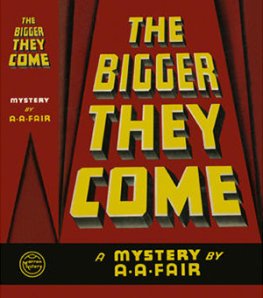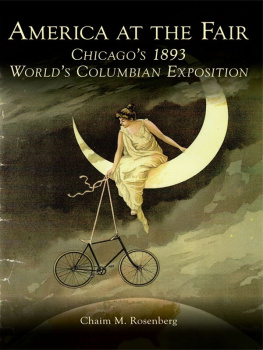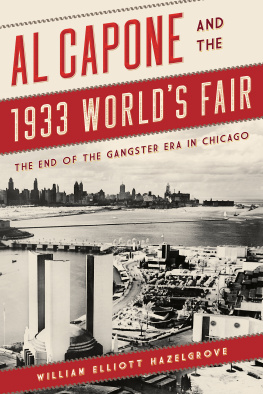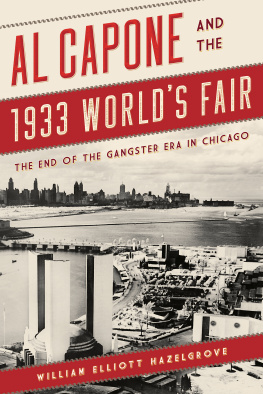This book was by far the most complex project that I have undertaken to date. There were so many strands that needed to be followed, understood, then woven together into a digestible whole that told the story I wanted to tell. As much as I have included in this book, that which I left out could fill entire shelves with additional books on the subject matter. There are times when, as a historian, one is frustrated by a paucity of source materialfor this book, it was the opposite. I often felt overwhelmed by the amount of material available, and making sense of it all while also trying to be as thorough as possible wasnt easy. My aim in writing this book was to try and capture the Zeitgeist of this era, using the Worlds Fair, aviations Golden Age, and the rise of fascism as lenses through which to gain an understanding of it. It is not an attempt to write a definitive account of the fair or any of the main figures that are featured in this book. There are a number of secondary sources that I would highly recommend to readers who are interested in pursuing these topics in greater depth. Cheryl Ganzs book, The 1933 Chicago Worlds Fair: A Century of Progress, is the best book written to date on the 1933 Chicago Worlds Fair. The late Claudio Segrs biography of Italo Balbo is the most informative and well-written book in English on this controversial figure. Balbo himself wrote a number of volumes in Italian on his air voyages. The late Douglas Bottings Doctor Eckeners Dream Machine is an excellent dual biography of the man and his airship. Eckeners memoir, My Zeppelins, is also available in English, and is a great read. He was a bit of a poet. If you want to understand in detail the first Space Race of manned ballooning in the 1930s, David DeVorkins Race to the Stratosphere is the definitive account, while Tom Cheshires The Explorer Gene is an outstanding multibiography of an extraordinary familythe Piccards.
David Hanna teaches history at Stuyvesant High School in Lower Manhattan. He is a recipient of the New York Times Teachers Make a Difference Award and the University of Chicagos Outstanding Educator Award, and is the author of Knights of the Sea: The True Story of the Boxer and the Enterprise and the War of 1812 (2012), which New York Magazines Approval Matrix categorized as high-brow, brilliant, and Rendezvous with Death: The Americans Who Joined the Foreign Legion in 1914 to Fight for France and for Civilization (2016). As a result of his work on the latter book, he was invited to become a publishing partner of the United States World War One Centennial Commission. Both books are currently in print. Hanna has been a featured speaker at the Smithsonians National Portrait Gallery, the Independence Seaport Museum in Philadelphia, the Maine Maritime Museum, the Rhinebeck Aerodrome Museum, and the American School of Paris, among others. He lives in Morris County, New Jersey, with his wife and two children.
This was an ambitious book to write; without the help and generosity of spirit of knowledgeable guides, I would have no doubt stumbled from the outset. I would like to extend my most sincere thanks to Marilyn Bergante at the University of Illinois Chicagos Special Collections, as well as her staff. They were unfailingly patient and helpful. The time I spent in the Sharon Hogan Reading Room at UIC represented the most important component of my research. Frankly, this book couldnt have been written without it. I would also like to thank Lesley Martin of the Chicago History Museum for sharing the radiograms received at the Drake Hotel on July 15, 1933. Collectively these documents conveyed the breathless quality of the anticipation in Chicago on that long-ago day in a way that nothing else could. Id also like to thank Ms. Martin for pointing me to the UIC archives. Without her suggestion, that treasure trove might have eluded me. Principal Stephen Locke at Joliet High School was generous with his time on a busy school day to show me the original artwork by one of the schools famous alumna, sculptor Louise Lentz Woodruff, for the 1933 Chicago Worlds Fair. Getting to see this in person made a deep impression on me. Kathleen McCarthy of Chicagos impressive Museum of Science and Industry provided me with detailed photographs of the interior of the Piccard Gondola that now hangs high above the museums aviation gallery, and is thus inaccessible. Guide Barry Sears, of the Chicago Architecture Center, explained Art Deco architecture on a frigid day, touring buildings from the 1920s and 1930s. Thanks to Mr. Sears, the whole concept of Art Deco (something that had escaped me up to that point in my life) finally clicked. Thanks also to the CACs Zachary Whittenburg for suggesting the tour, and helping me grasp the 1933 Fair in the larger context of the citys development as a whole; and historian, Cheryl Ganz, for generously sharing information about sources that I was having difficulty identifying. Catherine Uecker of the University of Chicago Library took time to point out useful resources for German-language Chicago newspapers. This turned out to be very helpful. Josephine Burri, director of philanthropy at the Shipley School in Bryn Mawr, Pennsylvania, provided me with a high-quality copy of Jeannette Ridlons graduation photograph, which I very much appreciated. Thank you, Lilo Peter of Harwood Watch Company, Ltd., for sharing the photograph of Lady Grace Drummond-Hay (Its Magnificent!). Mike Zickus took time to explain the existing original architecture of the old Bismarck Hotel, on his last day on the job as engineer after more than forty years. Id also like to thank the city of Chicago in general for maintaining its history so well. It can be a loud, fast city with an edge to iteven for a New Yorkerbut theres an honesty to Chicagos sense of self that is refreshing (but pay attention crossing the street!).
Closer to home, I would like to thank the Lakehurst Navy Historical Society for offering free, informative tours of the naval air stations historical sites. The U.S. Navy also deserves a great deal of credit for maintaining this history at what is, after all, an active military installation. As always, the Morris County (New Jersey) Inter-Library Loan program was indispensable. My next-door neighbor, Angela Notari, took the time to try to convey to me Italo Balbos Italian prose, while also sharing insightful pieces of information on him that she researched. I would also like to thank Stella Han (Columbia University 24) for her internet research on Italo Balbo, Hugo Eckener, and the Piccards, in various online archives. She located many useful sources. It also has been a great comfort to know that my supervisor at Stuyvesant High School, Jennifer Suri, understands and appreciates my work as an author. I am lucky. Im also lucky to have someone I can rely on in Paris to hunt down documents and rare photographs: merci Claire Khelfaoui.
I am also very fortunate to have connected with individuals whose own stories have connected in intimate ways with the story that I was telling. First, Bertrand Piccard and his cousin, Mary Louise Piccard, were willing to share their recollections from their grandparents Auguste, and Jean and Jeannette, respectively. These discussions brought home to me as nothing else could how the spirit of science and exploration were passed from one generation to the next in this remarkable family. Mary Louises father, the pioneering balloonist Donald Piccard, had very recently passed away when I first reached out to her. This was a very difficult time in her life. Her willingness to talk to me then, in particular, is something for which I will always be grateful. Hans-Paul Stroehle of Deutsche Zeppelin was absolutely the most informed and gracious guide to the world of the giant airships, of which he is intimately aware.






